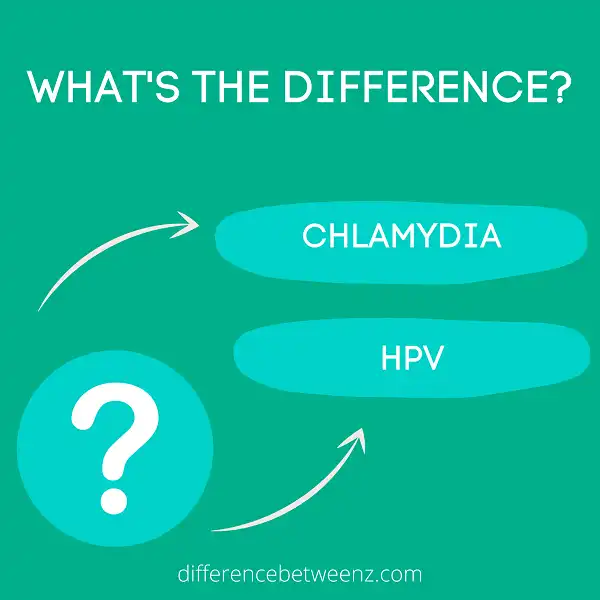Chlamydia and HPV are both sexually transmitted infections (STIs), Chlamydia is caused by the bacteria Chlamydia trachomatis, while HPV is caused by the human papillomavirus. HPV can cause cervical cancer, while chlamydia does not. Chlamydia is also much more common than HPV.
What is Chlamydia?
Chlamydia is a sexually transmitted infection (STI) that can cause serious health problems if left untreated. It is caused by the bacteria Chlamydia trachomatis and is usually transmitted through unprotected vaginal, oral, or anal sex. Chlamydia can infect both men and women, and it is especially common in young adults aged 15-24. Symptoms of chlamydia may include pain during urination, unusual discharge from the penis or vagina, and burning or itching around the genitals. However, many people who are infected do not experience any symptoms at all. If left untreated, chlamydia can lead to pelvic inflammatory disease (PID), which can cause infertility, ectopic pregnancy, and chronic pain.
What is HPV?
HPV, or human papillomavirus, is a group of viruses that can infect both males and females. There are over 150 different types of HPV, and each one is given a number. Some types of HPV can cause warts on the hands, feet, or genitals. Other types can cause abnormal cells to grow on the cervix, which can lead to cervical cancer. HPV is spread through sexual contact, and it is very common. In fact, most sexually active men and women will contract HPV at some point in their lives. However, most people who have HPV do not experience any symptoms and will never know that they have it. In most cases, the body’s immune system will clear the virus within a year or two. However, some people may develop chronic infections that can last for years. These chronic infections can lead to cancer or other health problems.
Difference between Chlamydia and HPV
Though both chlamydia and HPV are sexually transmitted infections, they are caused by different organisms. Chlamydia is caused by bacteria, while HPV is a virus. Chlamydia is treated with antibiotics, while there is no cure for HPV. However, both infections can be prevented by practicing safe sex and using condoms. Left untreated, both chlamydia and HPV can lead to serious health problems such as infertility or cancer. Therefore, it is important to get tested for STIs on a regular basis, especially if you are sexually active.
Conclusion
Chlamydia and HPV are both sexually transmitted infections (STIs), but there are some big differences between the two. Chlamydia is caused by the bacteria Chlamydia trachomatis, while HPV is caused by a virus. HPV can lead to cervical cancer, while chlamydia does not cause any long-term health problems for most people.


